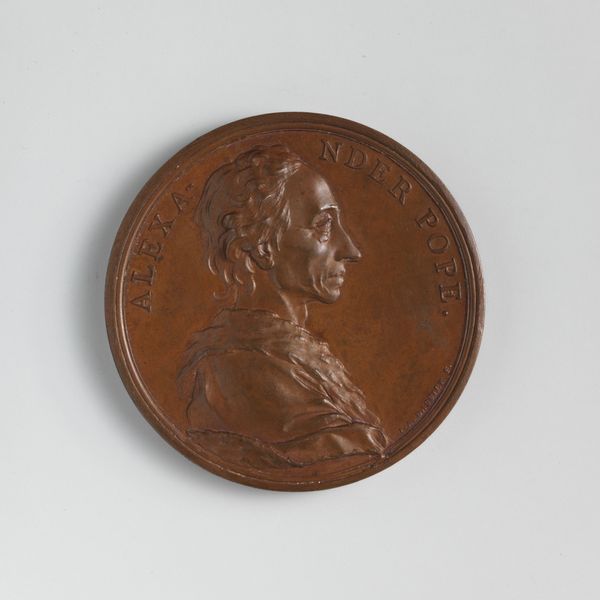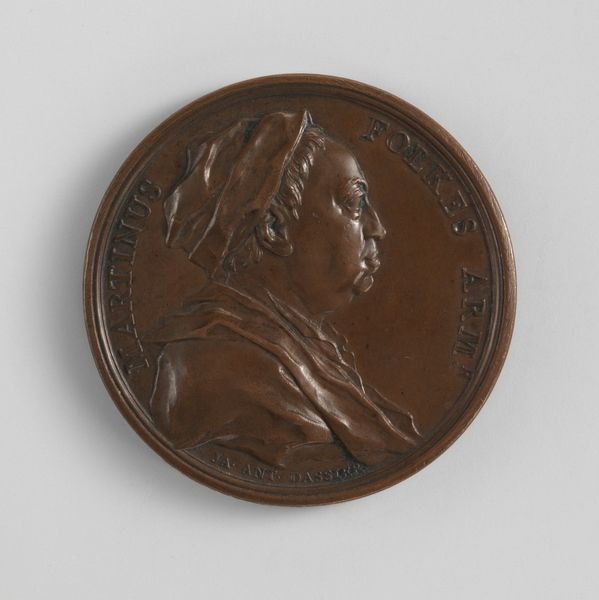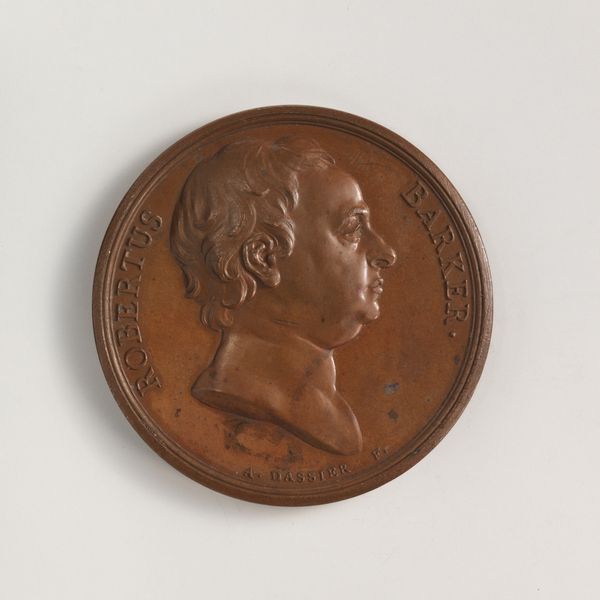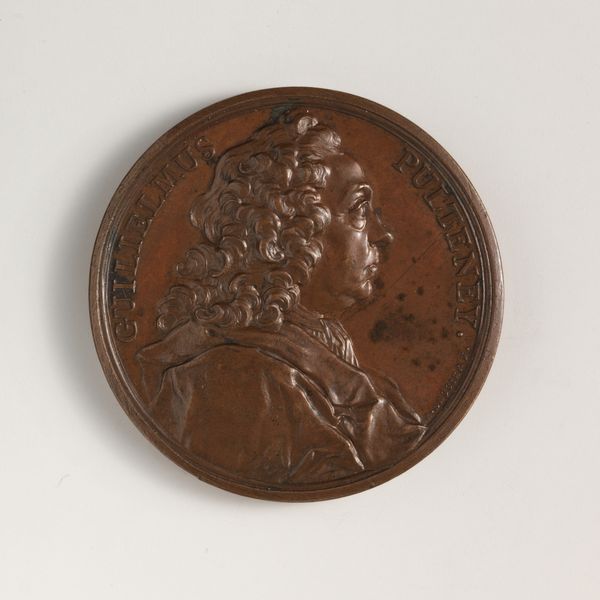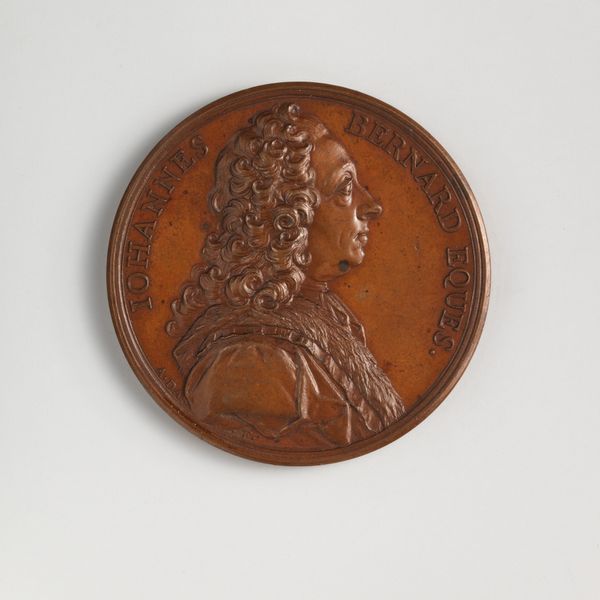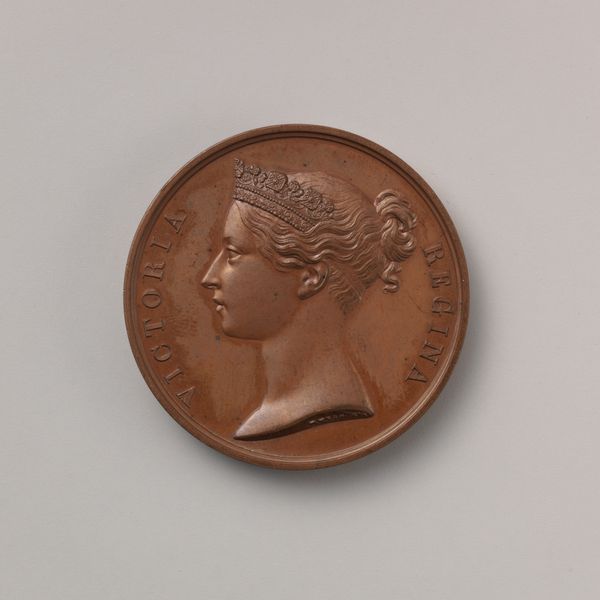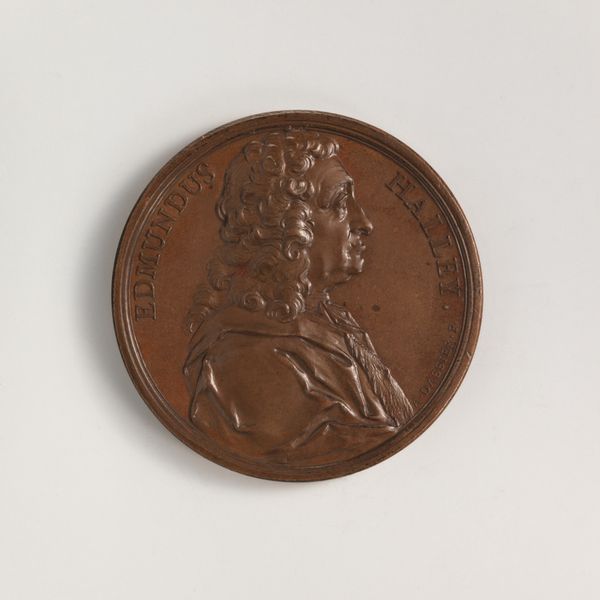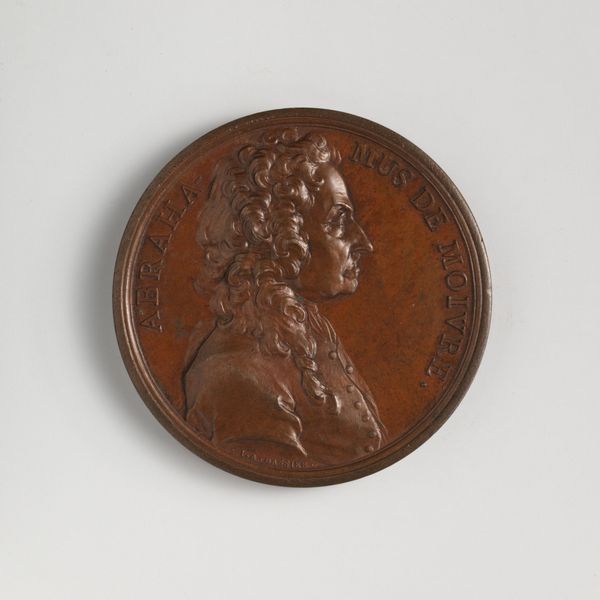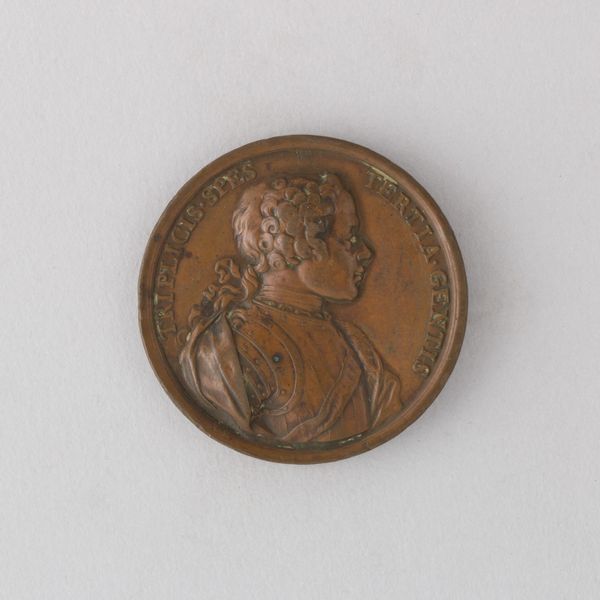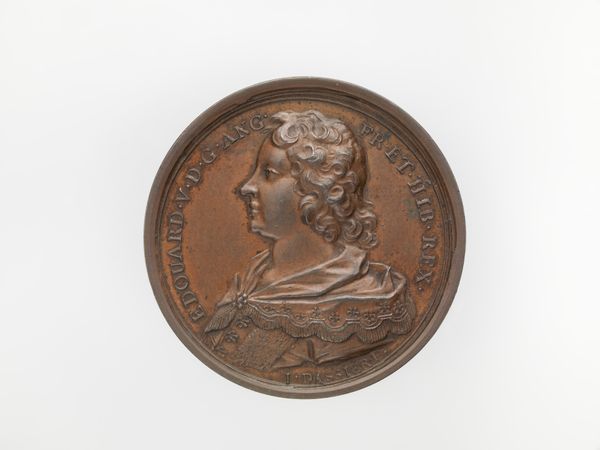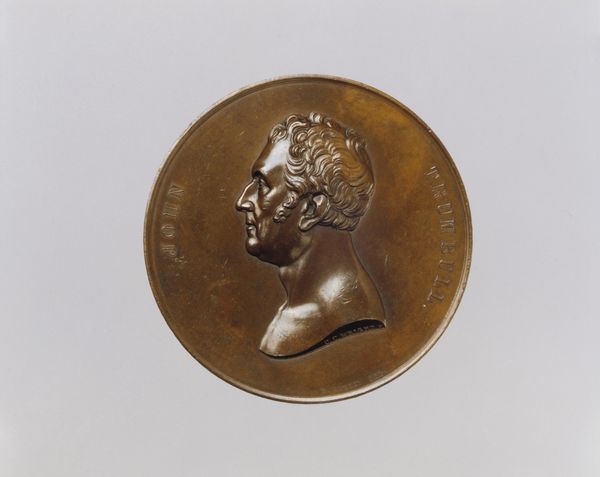
Charles Spencer, 3rd Duke of Marlborough (1706–1754) 1742
0:00
0:00
bronze, sculpture
#
portrait
#
medal
#
baroque
#
bronze
#
sculpture
#
men
#
decorative-art
Dimensions: Diameter: 54 mm
Copyright: Public Domain
Curator: This bronze medal, crafted by Jacques-Antoine Dassier in 1742, immortalizes Charles Spencer, the 3rd Duke of Marlborough. Editor: There's a stillness, an almost melancholy about his profile. The dark bronze enhances the seriousness of the duke’s expression. It evokes the visual language of ancient coinage but flattened, smoothed over. Curator: Absolutely, the profile view directly links to the tradition of Roman portraiture and, broadly speaking, this artwork recalls the visual cues present in Baroque portraiture, yet it appears constrained within the formal limitations of the medallion. It serves to perpetuate ideals of power and nobility associated with wealth and legacy. How might that impact its viewing audience? Editor: Well, it presents Marlborough not just as an individual, but as a representation of dynasty, of British aristocratic power structures and privilege. Note the deliberate detail etched into the armor. This sartorial emphasis acts to assert authority. Curator: Exactly. Medals, more than paintings, become powerful vehicles for disseminating and reinforcing certain social and political narratives to an often wide and public audience. Consider how many people handle currency and other tokens that feature authoritative symbols. The artist uses Spencer’s identity to affirm broader societal norms that reinforce this privilege. We see this repetition of important figures within artistic production and therefore throughout British culture. Editor: So it functions on several levels simultaneously – as an artistic expression, a status symbol for its commissioner, and an ideological token intended to circulate an agreed upon image. This object's existence relies entirely on upholding the Spencer's familial reputation as paramount, in ways that likely excluded common citizens in British society. Curator: Precisely. By situating this piece within the broader history of medallic art and eighteenth-century Britain, it allows for discussions around cultural values and inequalities prevalent then – reflections which continue to shape power structures in Britain and around the world today. Editor: I see the Duke in this circular bronze, a world unto himself and also a small but effective representation of societal power. Food for thought.
Comments
No comments
Be the first to comment and join the conversation on the ultimate creative platform.
